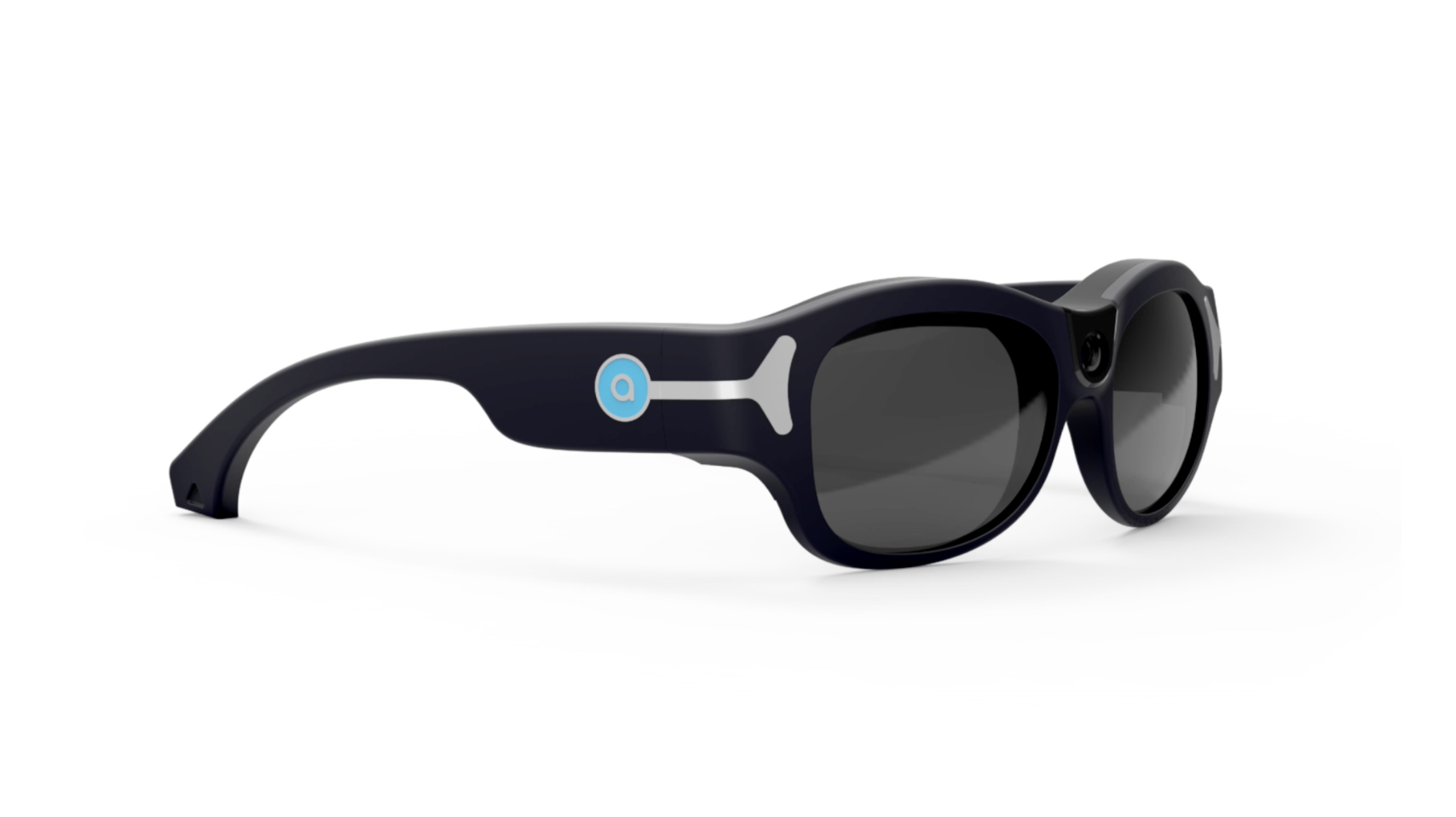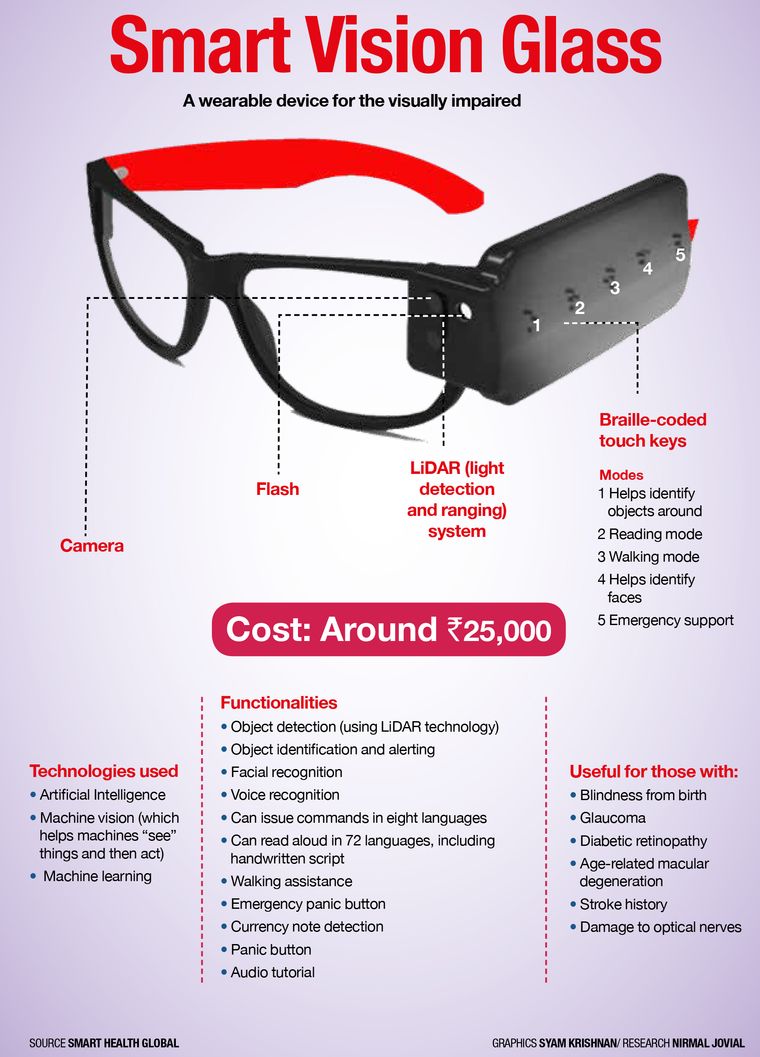Discover Advanced Assistive Devices for Individuals With Visual Problems
The landscape of assistive innovation for individuals with aesthetic problems is developing swiftly, providing an array of ingenious tools that improve freedom and interaction. From clever glasses that perfectly combine visual input with acoustic assistance to innovative navigating applications that redefine spatial awareness, these devices are reshaping opportunities.
Smart Glasses Innovations
Smart glasses stand for a substantial improvement in assistive innovation for individuals with visual impairments. Equipped with cams and sensors, smart glasses can capture real-time visual details, which is after that processed and conveyed to the user via sound responses or haptic sensations.
Moreover, advancements in expert system have actually additionally boosted the abilities of smart glasses. Equipment understanding formulas can acknowledge faces, read message, and identify items, making them indispensable devices for day-to-day tasks. Customers can obtain auditory signs that provide context concerning their environment, fostering independence and confidence.
In addition, the ergonomic design and light-weight nature of numerous clever glasses make them suitable for long term use, making certain comfort while boosting performance. As these tools remain to develop, they hold the potential to reinvent the means individuals with aesthetic problems experience their day-to-days live, bridging the void in between access and technology. The recurring study and growth in this field promise to expand the possibilities for clever glasses, making them a crucial element of modern-day assistive gadgets.
Navigating Application and Equipment
Countless navigation applications and tools have actually emerged as crucial resources for people with visual problems, significantly enhancing their capability to go across strange settings. These modern technologies utilize GPS capability, audio signs, and real-time data to give individuals with precise navigation assistance.
One prominent example is the Aira app, which attaches customers to skilled agents who can offer visual summaries of environments and navigation support through a live video clip feed. This service boosts the user's spatial understanding and self-confidence while browsing. One more remarkable device is Seeing Eye GPS, which supplies voice-guided navigating and points of passion, enabling customers to gain access to essential details regarding their surroundings.

As modern technology remains to breakthrough, the advancement of much more sophisticated navigation tools promises to further encourage people with visual disabilities, promoting smooth flexibility and integration into varied settings. Such innovations are important in advertising an extra inclusive culture.
Braille Technology Advancements
Over the last few years, advancements in Braille innovation have actually significantly changed how people with aesthetic impairments accessibility info and involve with the globe around them. The development of portable Braille display screens has changed reading by check enabling users to connect wirelessly to tablets, mobile phones, and computer systems. These devices transform text into Braille in real-time, enabling smooth interaction optometrist specialist with digital web content.
Additionally, ingenious Braille printers have actually emerged, boosting the manufacturing of tactile materials. Modern embossers are faster and much more reliable, allowing for the quick creation of Braille documents and academic products. This performance decreases the time and price related to producing Braille resources, making them a lot more easily accessible to institutions and organizations.
Additionally, the integration of Braille with other technologies, such as artificial knowledge and device knowing, has opened brand-new avenues for tailored learning experiences. Voice acknowledgment and synthesis modern technologies can match Braille, providing a comprehensive strategy to information dissemination.
As the need for inclusive education and work environment atmospheres expands, these technical innovations play an important function in encouraging people with aesthetic disabilities, guaranteeing they have equal access to info and opportunities in various aspects of life.
Wearable Gadgets for Independence
An expanding variety of wearable tools is improving freedom for people with visual disabilities, supplying innovative solutions that boost navigating and daily living. Braille displays and notetakers. These tools use sophisticated technologies to give real-time responses and support, advertising freedom in different settings

Wearable innovation likewise includes smartwatches that visit the site can be programmed with accessibility attributes, enabling users to obtain alerts, track their places, or perhaps call for support with the touch of a button. Additionally, some devices incorporate expert system to assess the setting, offering sound descriptions of nearby objects or people.
Voice-Activated Assistive Solutions
Leveraging voice-activated assistive services has actually transformed the landscape of support for people with visual disabilities, providing hands-free communication and access to a range of jobs. These technologies make use of all-natural language handling and expert system to allow users to execute day-to-day activities through simple voice commands.

Moreover, recent advancements in voice acknowledgment precision have actually enhanced the individual experience substantially, accommodating varied accents and speech patterns. This inclusivity makes certain that more individuals can gain from these technologies, cultivating a greater feeling of freedom.
Final Thought
In final thought, the growth of sophisticated assistive tools considerably improves the independence and high quality of life for people with visual disabilities. Developments such as smart glasses, navigation apps, Braille innovation, wearable devices, and voice-activated solutions jointly promote a more inclusive atmosphere. These innovations encourage users to browse their surroundings with confidence and engage more fully with the globe, eventually advertising higher access and level playing fields for individuals encountering aesthetic challenges.
The landscape of assistive innovation for people with visual impairments is progressing rapidly, providing an array of innovative tools that improve autonomy and involvement.Smart glasses stand for a significant improvement in assistive innovation for individuals with aesthetic impairments. As these tools continue to develop, they hold the potential to transform the way individuals with visual problems experience their everyday lives, bridging the void between availability and technology.In current years, improvements in Braille modern technology have considerably transformed just how people with visual disabilities access info and involve with the world around them. These innovations encourage customers to browse their environments with confidence and involve even more totally with the world, ultimately advertising greater access and equal possibilities for people dealing with aesthetic challenges.